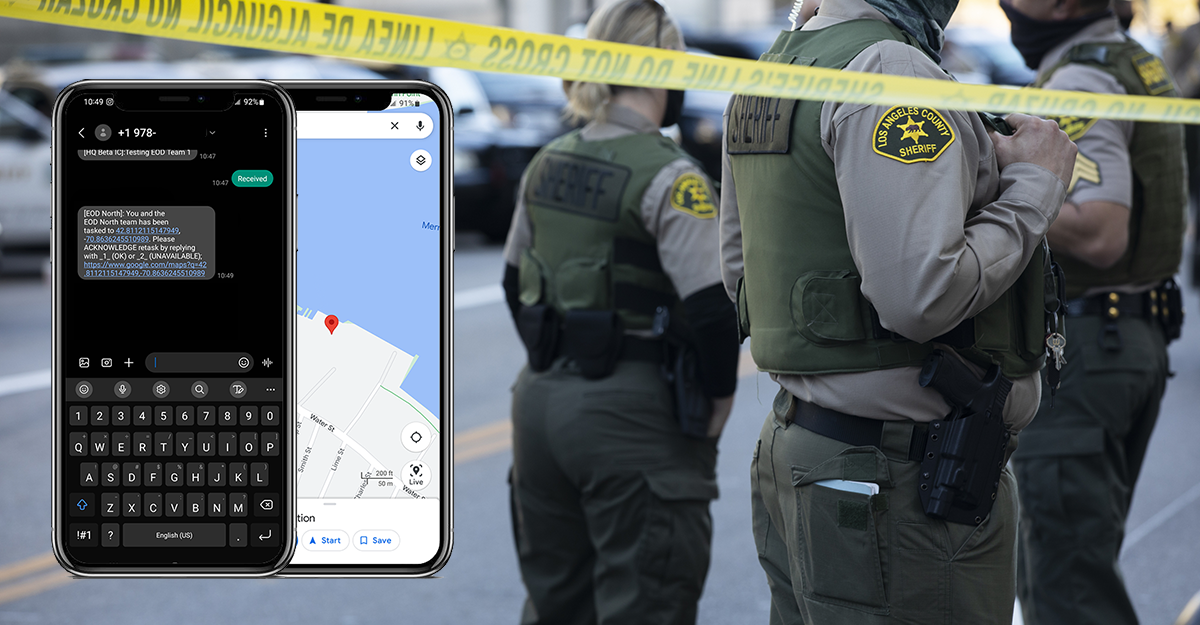
Automated and Unified Incident Messaging: Now in Blueforce’s new Adaptive ICS Module for BlueforceCOMMAND
During complex emergencies, such as natural disasters, civil unrest, or mass migration, radio communication is often a critical tool for coordinating response efforts, providing information to affected populations, and maintaining public safety. During large or complex incidents, radio traffic can become congested due to high demand, making it difficult for incident command to transmit and receive messages effectively. As well, given the crush of responding agencies and the complexity of the event, incident commanders need to prioritize the flow of messages they put on the air. This can create unintentional consequences due to the sequential nature of radio traffic. Ever present is the challenge of interoperability between different responding organizations’ radio systems which is a crucial component in ensuring effective communication and coordination across agencies and municipalities.
Land Mobile Radios (LMR) have always “just worked”, but alternate or augmented communications paths can be critical for an effective response. Consider for a moment that radio waveforms have other challenges:
- Reliability: Radio communication can be disrupted or become congested during complex emergencies, making it unreliable as a sole means of communication.
- Reach: Radio communication can be limited by its range and may not reach all affected areas.
- Crush: Radio communications are fundamentally sequential or serial in nature. That is, only one person can be keying the microphone at any given moment, meaning that assignments and even re-tasking orders may take a backseat to more critical orders. Yet, ALL orders are critical in keeping operational tempo when lives are on the line.
When we designed our new Adaptive ICS Module for BlueforceCOMMAND, we embraced process per ICS, but we also designed in alternative communications paths. As well, we looked for ways to automate certain messaging that would dramatically decrease radio traffic by sending automated messages with full bidirectional acknowledgement using a standard nearly EVERYONE carries in their pocket today: SMS (short message service) which is present on every mobile device that leverages 4G/LTE/5G. SMS and text messaging can be useful tools for emergency management for multiple reasons:
- Speed: SMS and text messaging provide a fast and efficient way for emergency management personnel to communicate with each other and with the public. This can be especially important during an emergency when time is of the essence.
- Wide Reach: SMS and text messaging can be used to reach a large number of people quickly. This can be important in disseminating information about the emergency, such as evacuation orders or updates on the status of the incident.
- Accessibility: SMS and text messaging can be accessed on a wide variety of devices, including cell phones, which are widely used and readily available. This makes it an effective way to reach people who may not have access to other forms of communication, such as email or social media.
- Reliability: SMS and text messaging are often more reliable than other forms of communication, such as email or social media, during an emergency. This is because SMS and text messaging traffic is given priority on the cellular network, which can help ensure that messages are delivered even in situations where network congestion is an issue. A little known fact: even during the worst disasters, cellular voice may be unavailable, but SMS usually survives the event.
We have exposed this idea of “automated and unified messaging” in a number of areas in the new Blueforce Adaptive ICS Module for BlueforceCOMMAND:
- BlueforceCOMMAND Roster: A new “External Contact” capability has been added to the Blueforce “roster” allowing SMS only users to be added to BlueforceCOMMAND. 1:1 SMS and 1:1 MMS messages can now be sent with a single click. As well, external users may be added using our new “Virtual ICS Registration” webform capability that allows responders to register with the IC even while enroute.
- ICS Chart Object: The Incident Commander can now click on any of the ICS org chart boxes and send a single message, which BlueforceCOMMAND will “figure out” the best way to send. For Blueforce users, the message sends using our secure chat function native to all clients on our platform. Others can send and receive SMS, XMPP for those with interoperable chat services, and soon bi-directional support with Airbus Tactilon AGNET MCPTT platform.
- ICS Chart “Branch”: The Incident Commander can click at the top of the hierarchy in an Incident Command “branch” and send a message to all responders in that branch.
- Blueforce Teams: Blueforce supports the creation of “Teams” which enables the IC to send a single broadcast to a Blueforce “team”.
- Team Re-tasking: If the IC or one of the Section Chiefs wishes to deploy and/or redeploy a Blueforce team to a specific location, Blueforce Teams now supports the send of “re-task” orders as an autonomous action meaning the IC or Section Chief can put a dot on a map, and a Blueforce and/or SMS message is sent to each member with a message that shares “where” and even includes a link to a map showing the exact location. Responders/teams can acknowledge the re-task letting the IC know the order was received.
The all new Blueforce Adaptive ICS Module is available NOW in beta mode and will ship FREE with our BlueforceMOBILE Command Post. The capability can be licensed for non-Mobile Command Post agencies. The learn more, send an email to info@blueforcedev.com, or, fill out our CONTACT ME form on our website.


